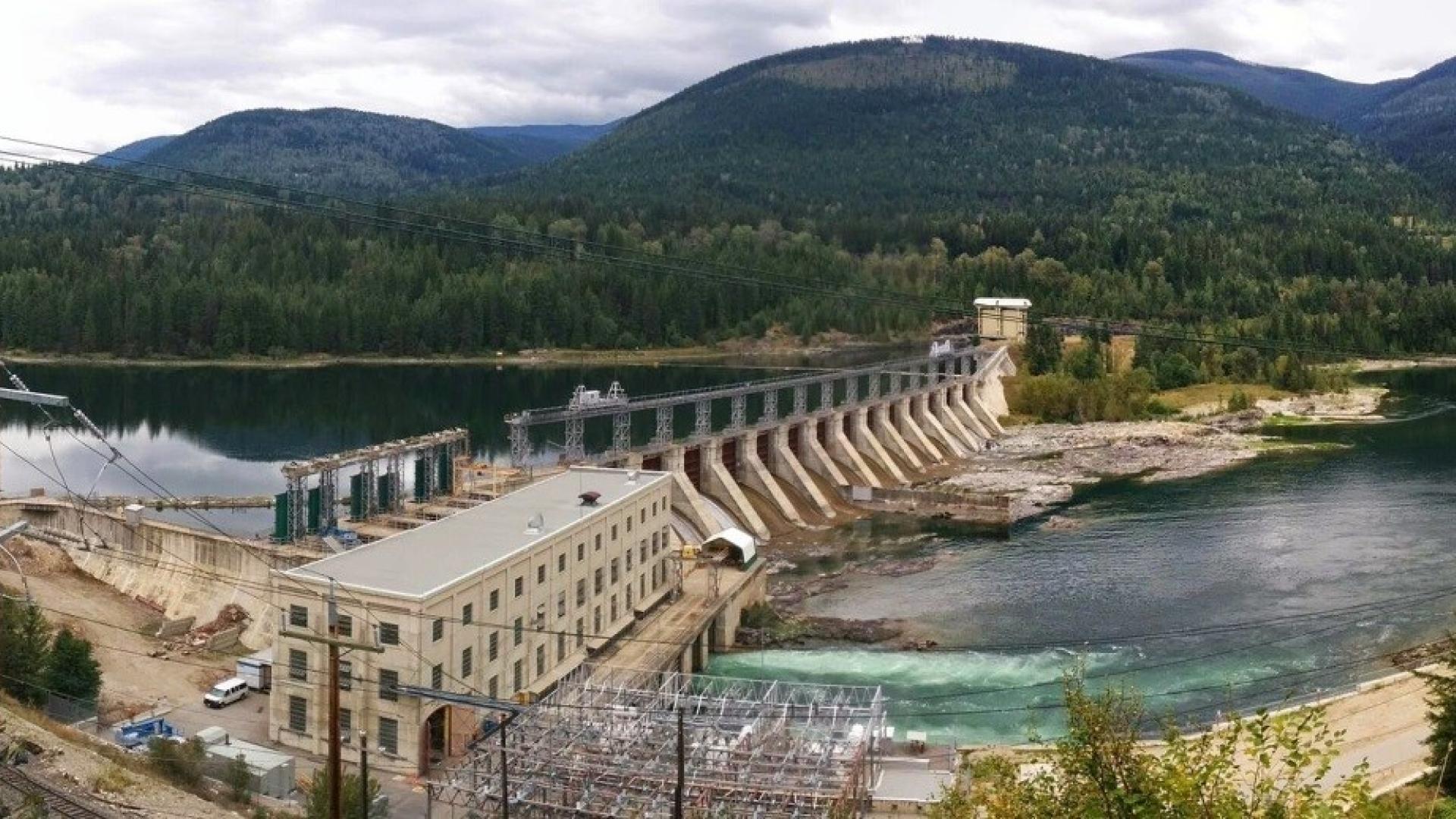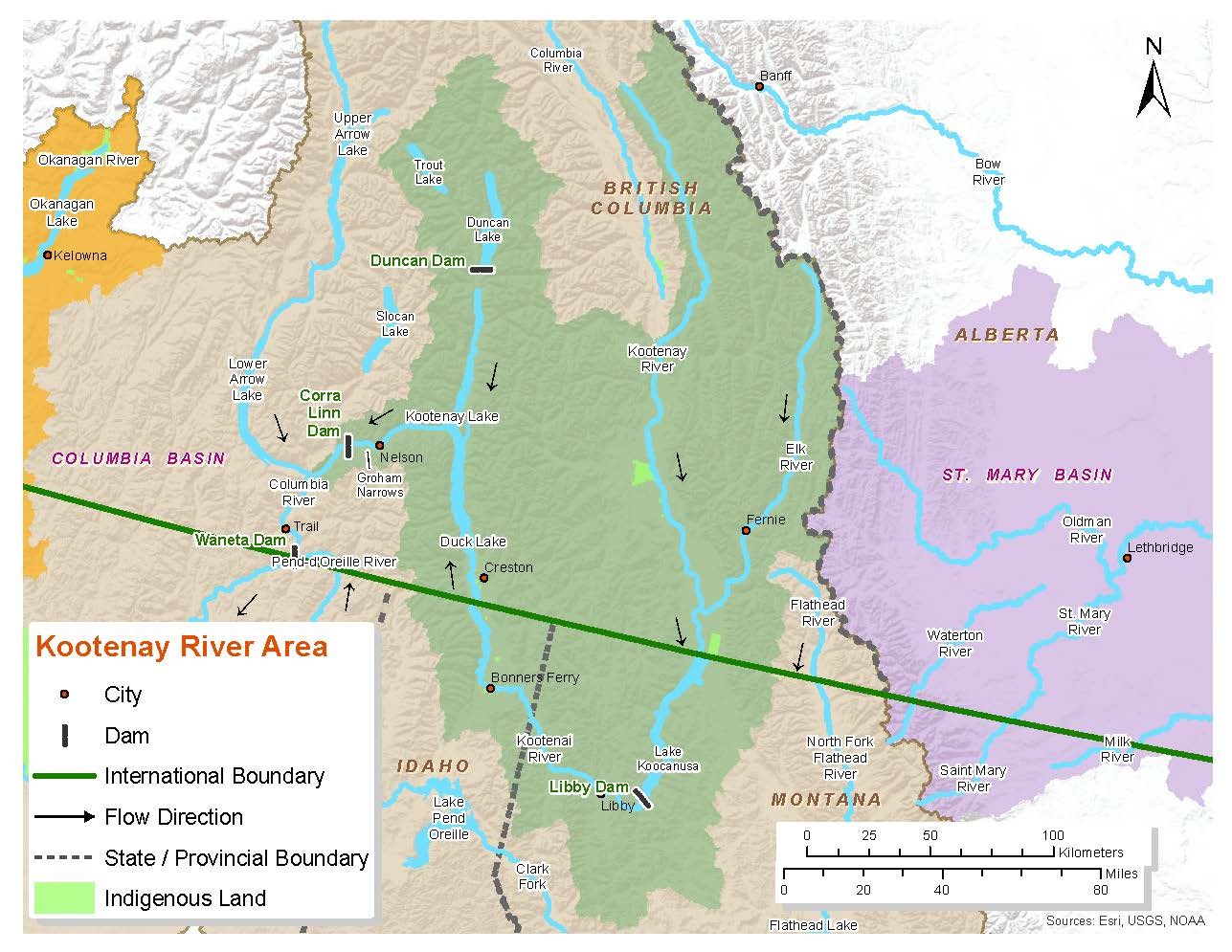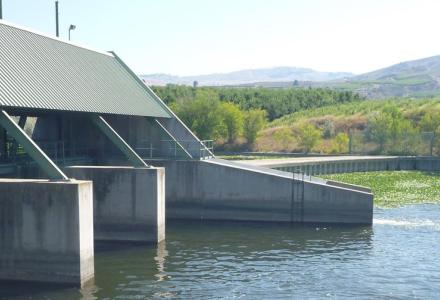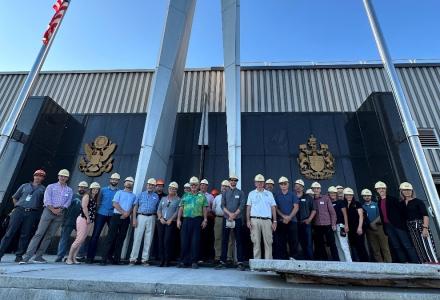

The Corra Linn Dam has held water in Kootenay Lake since it was commissioned in 1932 to generate electricity from the Kootenay River. But in all that time, the dam has received only minimal upgrades, aside from those made to three generator units. Starting this summer, an extensive project will begin replacing spillway gates and improving other elements of the dam.
In 1938, the IJC approved the operation of Corra Linn Dam and the storage of 1.8 meters (5.9 feet) of water in Kootenay Lake. The Order of Approval contains conditions to protect agricultural interests in Idaho affected by increased water levels in the portion of the Kootenay River that drains into Kootenay Lake. The IJC established the International Kootenay Lake Board of Control to oversee the regulation of Kootenay Lake water levels.
During the new upgrade project, all 14 spillway gates and embedded components associated with them will be assessed and either refurbished or replaced, said Darren McElhinney, dam upgrade project manager working with operator FortisBC.
The superstructure of the spillway will be newly reinforced and rebuilt, the gantries that open the gates will be refurbished, and multiple redundancies for the gates will be installed. The project should wrap up in the fall of 2021, and isn’t expected to significantly impact water levels or flows for the duration. FortisBC is funding the work, which is expected to cost CDN$66.7 million (US$51.4 million).
British Columbia updated its dam safety regulations in 2009. Under the new regulations, the dam’s spillway gates don’t meet extreme earthquake event requirements. The other reason for the work is age.
“The gates are 85 years old,” McElhinney said. “The US Army Corps of Engineers has a standard that a gate, well-maintained, should have a service life of around 100 years, so we’re getting close to that.”

No more than three gates will be replaced at a time, said Jamie King, power supply operations manager for FortisBC. This will allow the dam to continue passing through water in the event of floods in the next few years while work is underway. This won’t impact the company’s ability to manage Kootenay Lake’s water levels, King added, though the additional automation and improvements to the system should make FortisBC’s work a bit easier.
“We haven’t seen any failures or anything of that sort, but we do know the equipment is aging,” he said. “It’ll be a better functioning and more reliable, safer operation when it’s completed.”
International Kootenay Lake Board of Control Canadian Secretary Gwyn Graham said the board has been in close contact with FortisBC and regularly reviews information about the project to ensure that it doesn’t impede the company’s ability to operate the dam in compliance with rules for maximum water levels and other conditions of the IJC Order for Kootenay Lake.
Graham said the dam doesn’t need all 14 spillways available to pass through the maximum amount of water – redundancy was built into its design – and so the board isn’t expecting impacts to lake level management.
The gantry work is due to start in July 2018. This puts it after the 2018 spring freshet season, which should further minimize flood risks, McElhinney said. Following that, work on the dam should continue on a full-time basis until finishing in November 2021. Besides the gates, new monitoring equipment is being installed to identify any problems with gantries used to lift the gates.


Kevin Bunch is a writer-communications specialist at the IJC’s US Section office in Washington, D.C.



